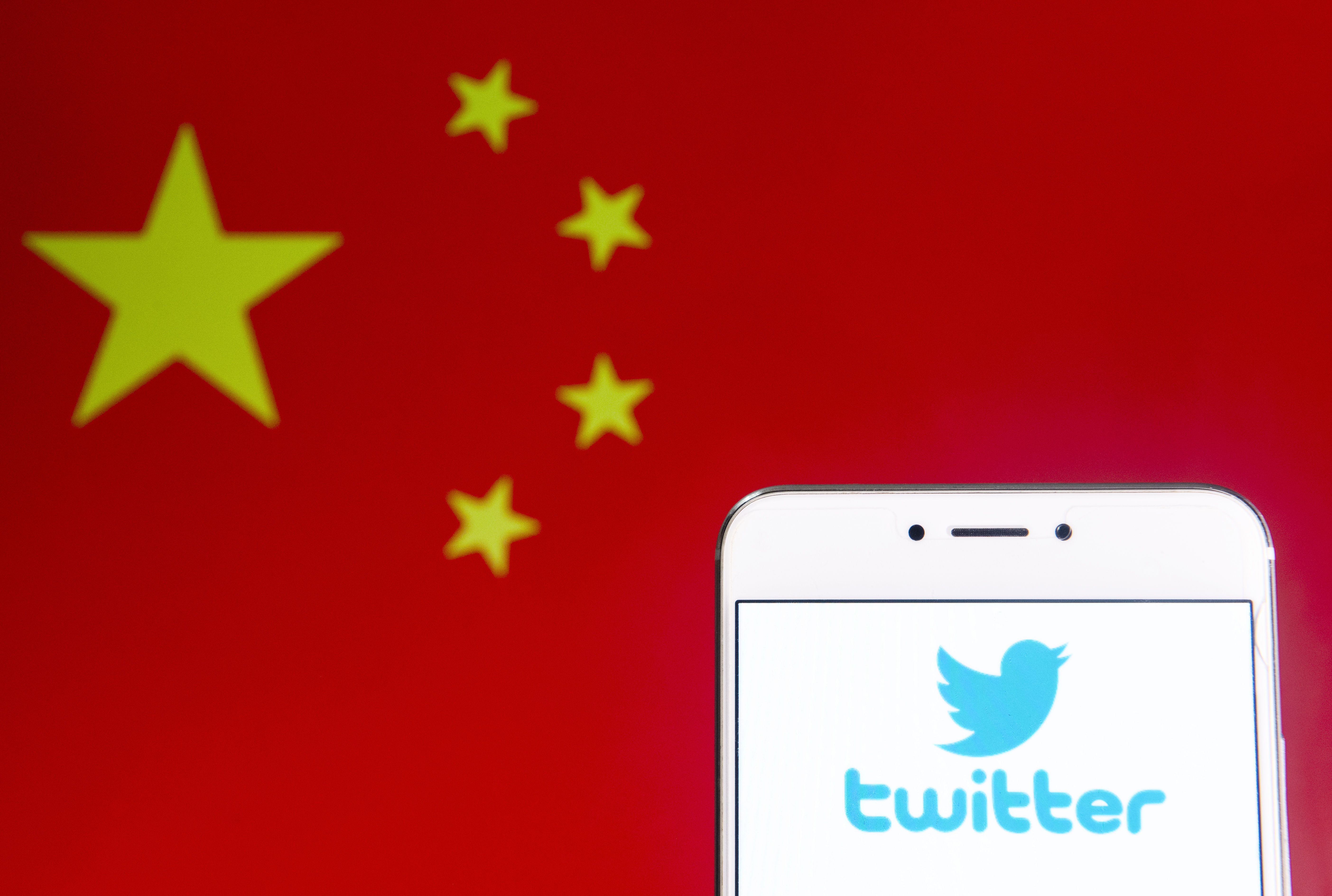China’s Public Diplomacy on Social Media

The Chinese authorities are convinced that the methods used to promote Chinese policy in Europe and the U.S. need to be modernised. Traditional forms such as interviews with Chinese diplomats or sponsored articles are now considered insufficient in the modern era of social media. By using Twitter and Facebook, the activity is directed at foreign recipients. Both sites are unavailable in China without prohibited software and users are often targeted by China’s security apparatus.
Objectives
China’s intensification of activities on Western social media serves to strengthen its position in the strategic rivalry with the U.S. and to respond to concerns about the Belt and Road Initiative (BRI), such as the much-debated debt trap risk, among others. The promotion of cooperation with partners other than the U.S., including with EU countries, is also gaining importance. The Chinese authorities want to change negative associations in Western societies regarding, for example, China’s political model. They also want to portray China in a positive light vis-à-vis the U.S., which the Chinese authorities blame for lack of agreement on trade, as well as for creating problems in the global economy. China presents itself as a promotor of globalisation (vs. the protectionist U.S.), climate protection (together with the EU, vs. a passive U.S. attitude), and the multilateral international order (rejecting American hegemony). The main political slogan is building a “community of a shared future for mankind”, with China at its centre. The accounts also promote Chinese interests, such as portraying Huawei as a secure partner in the construction of 5G networks, justifying brutal police actions in Hong Kong, or the repression of Uighurs in Xinjiang.
The content posted on social networks is also part of the Chinese promotion of a specific understanding of existing norms and procedures (e.g., demarcation of sea borders or civil liberties) where compliance is based on the impact on the political interests of China rather than other states. According to Communist Party of China (CPC) statements, the South China Sea, for example, has always been Chinese territory, and the Sino-British Declaration on Hong Kong in 1984 lost validity as international law a long time ago. These theses contradict the current global order based on international law and liberal democratic values, as promoted by the EU and the U.S.
Mechanism of Action
The Chinese content posted on social media accounts is harmonised by the “United Front”, a cooperative of eight Chinese political parties subordinated to the CCP. The United Front Department of the Central Committee of the CCP manages the substantive content of statements by state institutions as part of their contact with foreign countries, ensuring that they present opinions consistent with Chinese policy, including on social media profiles.
An important figure in the Chinese presence on Twitter is Zhao Lijian, one of the spokespersons of the Ministry of Foreign Affairs of the PRC, the deputy director-general of the ministry’s Information Department, and until October this year, the deputy ambassador of the Chinese embassy in Pakistan. His Twitter account was opened in 2010 and he has more than 200,000 followers on the platform. After one of his tweets in which he commented on the problem of discrimination against racial minorities in the U.S., Susan Rice, the U.S. ambassador to the UN at the time, called him a “racist disgrace”. In recent months, many Chinese ambassadors have created accounts, such as Liu Xiaoming in the UK (6,000+ followers), Lin Songtian in South Africa (1,200+ followers), Cui Tiankai in the U.S. (20,000+ followers), Yang Wangming in Brazil (1,500+ followers), Li Xiaosi in Austria (500 followers), as well as others in Nepal, Zimbabwe, the Maldives, and Saudi Arabia. The Chinese embassy in Poland also recently launched its account (300 followers since July 2019). In addition to the uniform message, each account presents content profiled to the country of its location (e.g., the Chinese embassy in Poland congratulated Polish writer Olga Tokarczuk after she received the Nobel Prize for Literature).
China’s information activities are also supported by fake accounts identified by social networking sites as originating in China. They provide an additional channel to push narratives to social media users. In August, Twitter closed nearly 1,000 of these profiles and identified up to 200,000 more related to them. Facebook, at the same time, liquidated at least three groups of users, totalling 15,000 fake accounts. Google blocked 210 similar channels on YouTube.
Accounts belonging to prominent Chinese media employees also play a special role on social media. This applies, in particular, to the English version of the CPC daily Huanqiu Shibao (Global Times). On the profile of its editor-in-chief, Hu Xijin, (opened in 2014, now with more than 120,000 followers), tweets are published in English, including entries suggesting Hong Kong police use live ammunition on protesters and an argument that the repression in Xinjiang has prevented terrorist attacks from happening in China. Also active is, for example, Chen Weihua, head of the office of the English-language newspaper China Daily in Brussels, and previously a correspondent in the U.S. (he has had an account since November 2009 and has more than 6,000 followers). These special accounts not only explain Chinese policy but are also used to accuse Western media, politicians, and experts of prejudice against China.
In the meantime, the Chinese authorities are gathering information on these accounts’ reach and trying to expand the number of followers. In June, the Chinese MFA awarded $400,000 to the Global Times to monitor social networking sites for information on China on behalf of the ministry. In August, a similar tender, but worth $800,000, was won by an external company to promote content on Facebook for the Cyberspace Administration of China
Conclusions and Perspectives
The combination of official mass messaging with direct social media interaction helps China reach some foreign users with its viewpoint on the international situation and Chinese internal affairs. This applies to, among others, Chinese claims in the South China Sea or the repression of Uighurs in Xinjiang. The profiles on Twitter and Facebook give China the possibility of direct interaction with citizens in European countries and the U.S., mainly politicians, journalists, and experts. Given the number of followers and the speed of dissemination, Chinese themes can more easily join the official debate. They also allow China to strengthen and increase support in selected countries for cooperation with it. Thus, the Chinese authorities are using the pluralistic nature of democratic systems to influence the decision-making process in these countries.
The effectiveness of the Chinese activity is difficult to measure. The relatively small number of followers and the often exaggerated nature of the entries (e.g., the comparison of protesters in Hong Kong to ISIS members or the accusation that the U.S. is seeking a “colour revolution” in China) mean that for some Western followers of these accounts, the arguments are not sufficiently convincing. The Pew Research Center has found that Western European societies did not have a good opinion about China in 2019 (57% negative to 37% positive). These proportions are different in Central Europe (36% to 43%). China will next modify the message, probably improving content identification and recipient selection, including the use of artificial intelligence, and relying more on the popular Chinese platform TikTok, which allows users to share short videos.
With China’s activity essentially anti-democratic messaging, it may become a threat to the quality of information in EU societies. For the Union, it is crucial to verify and respond to messages that seek to counter current international law (like the South China Sea claims) or liberal values such as human rights (e.g., the narratives about the situation in Tibet and Xinjiang). Also important are European Commission reviews of U.S.-based internet companies, such as Google, Facebook, Twitter, and Microsoft, to check how well they have implemented their Code of Practices on Disinformation, adopted by these companies in May.


